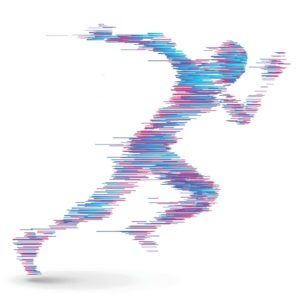 You’ve been putting in the hard work to get stronger and faster. Have you overlook the free speed that’s available? Here are a number of things that will make you faster that don’t require training.
You’ve been putting in the hard work to get stronger and faster. Have you overlook the free speed that’s available? Here are a number of things that will make you faster that don’t require training.
General
A tight-fitting one or two-piece tri suit, according to your preference. Tight fitting is key.
Challenging courses and tough conditions will separate athletes – those that plan and train better from those that don’t. Use that to your advantage.
Know the course, where the hills are, where the turns are, where the hard parts are.
Have a strategy to stay cool – especially on humid days. Know how your body responds to heat.
Warm-up before your race.
Swim
Goggles that fit properly so you don’t have to stop and empty them.
Goggles that don’t fog so you can swim straight and not have to stop to clear them. This means an anti-fog product that works.
Ability to swim in a straight line so you only swim the course length.
Increased awareness in the water so you can recognize opportunities to draft.
Learn to safely dolphin dive in shallow water or breaking surf.
Learn to flip-turn. If you want to be a faster swimmer, do what swimmers do. Swimmers flip-turn.
Know how a wetsuit should fit and how to put it on. They fit your torso, not your limbs. A properly fit wetsuit will take 5-10 minutes to get into.
Know how to take a wetsuit off in 10-15 seconds.
Take your wetsuit off as quickly as you can once you exit the water. It will come off easier the wetter it is. Step to the side and get it off.
Practice transitions – the gold standard is sub 60-seconds. Use a one or two-piece tri suit so you don’t have to change clothes – ride in what you swim in and run in what you ride in.
Bike
Tires – Flat resistant tires may cost you 1 mph or more compared to the fastest tires available.
You might not want (or need) to do a flying mount and get into your bike shoes with them already attached to the bike, but you should be able to get out of them without unclipping. Reach down, unstrap and slide your foot out. Start this ¼ mile from transition the first few times. Practice, practice, practice.
Wheels – Race wheels can be purchased for less than $500 that will give you 99% of the gains of a high-end set of $2,000+ wheels from a major manufacture.
Proper placement of bottles on your bike can substantially reduce drag, thereby increasing speed.
Aero helmets provide nearly the same aerodynamic advantage as race wheels for far less money.
Practice cycling after the swim.
If it isn’t too hot, tape the vents on your aero helmet and use a visor instead of sunglasses.
Brake and shifter cable runs should be as short as possible and routed close to the frame.
Get a professional bike fit.
Tire pressure should match your weight and race day conditions. That max pressure printed on your tires is not necessarily what you are supposed to pump them up to.
No socks. Train that way. Both the bike and run.
Have proper gearing on your bike. 56/39 and/or 53/39 are both “Tour de France” or pro-triathlete cranksets. If that isn’t you, if you aren’t making money on your bike, then you’ll likely benefit from a compact 50/34 crankset. It’s ok, nobody’s going to stop and count teeth.
Know how to repair a flat in less than 5-minutes.
Clean your drivetrain.
Use latex tubes.
Consider your crank arm length. See bike fit.
Shave your legs – yes it makes a difference!
Run
It isn’t about how fast you can ride the bike leg, it’s about how fast you can run. Pace your ride so you can have a strong run. Wind resistance squares with speed so the bike will tend to minimize the differences between athletes of differing strength, while the run will accentuate those differences.
Consider an alternative to tying your shoe laces – Lock Laces, Eco City No-Tie Laces, etc.
In transition, get in and get out. Everything you want to wear or consume can be put on or situated while running. The Gold Standard is sub 60-second transitions.
Practice running off the bike.
Shave your arms – yes it makes a difference!
